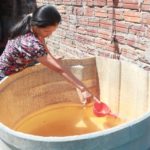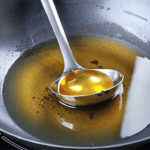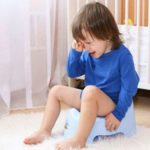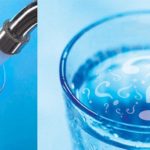Cooking oil is an indispensable ingredient in every household kitchen. However, used cooking oil needs to be disposed of properly to avoid causing undesirable effects.

Proper disposal of cooking oil protects the environment and health (Photo: Internet).
Never pour excess oil down the drain
Cooking oil is lighter and insoluble in water, and has high adhesiveness, so when discharged into the drain, it will stick to the pipe walls, obstructing the flow. Wastewater contaminated with grease can seep into the ground or be carried by rainwater into groundwater, causing the water to smell bad and affecting drinking water sources and human health.
Dispose of excess grease in plastic bottles or bags
The first way you can dispose of excess grease after cooking is to collect it in a plastic bottle, but be sure to let the oil cool before doing so.
Collecting cooking oil in plastic bottles prevents the oil from leaking into the environment. You can let the cooking oil solidify in the refrigerator before throwing it away. Then put the bottle of used oil in the trash. This method of disposing of cooking oil makes it easier for sanitation workers to collect garbage.
Use paper towels to soak up excess oil
If you don’t have too much cooking oil, you can use paper towels to soak up the oil. Once the oil has been thoroughly soaked up by the paper, wrap it in a plastic bag. You should not pour cooking oil directly into the trash, even in small amounts, because liquid cooking oil will easily spread and attract rodents.
If you don’t want your trash can to be suddenly ransacked overnight, use paper to soak up the oil, wrap it in a plastic bag, and then put it in the trash can. This is a way to help prevent excess grease from leaking into the environment.
Tips for Disposing of Excess Cooking Oil
Have you ever been left with excess cooking oil after a meal and been unsure of how to dispose it properly? Well, it turns out pouring it down the drain or flushing it down the toilet is not the right way to go about it as this can cause blockages in the pipes as well as attract a range of unpleasant pests. To help you with this issue, here are some proper methods for disposing of your excess cooking oil.






































